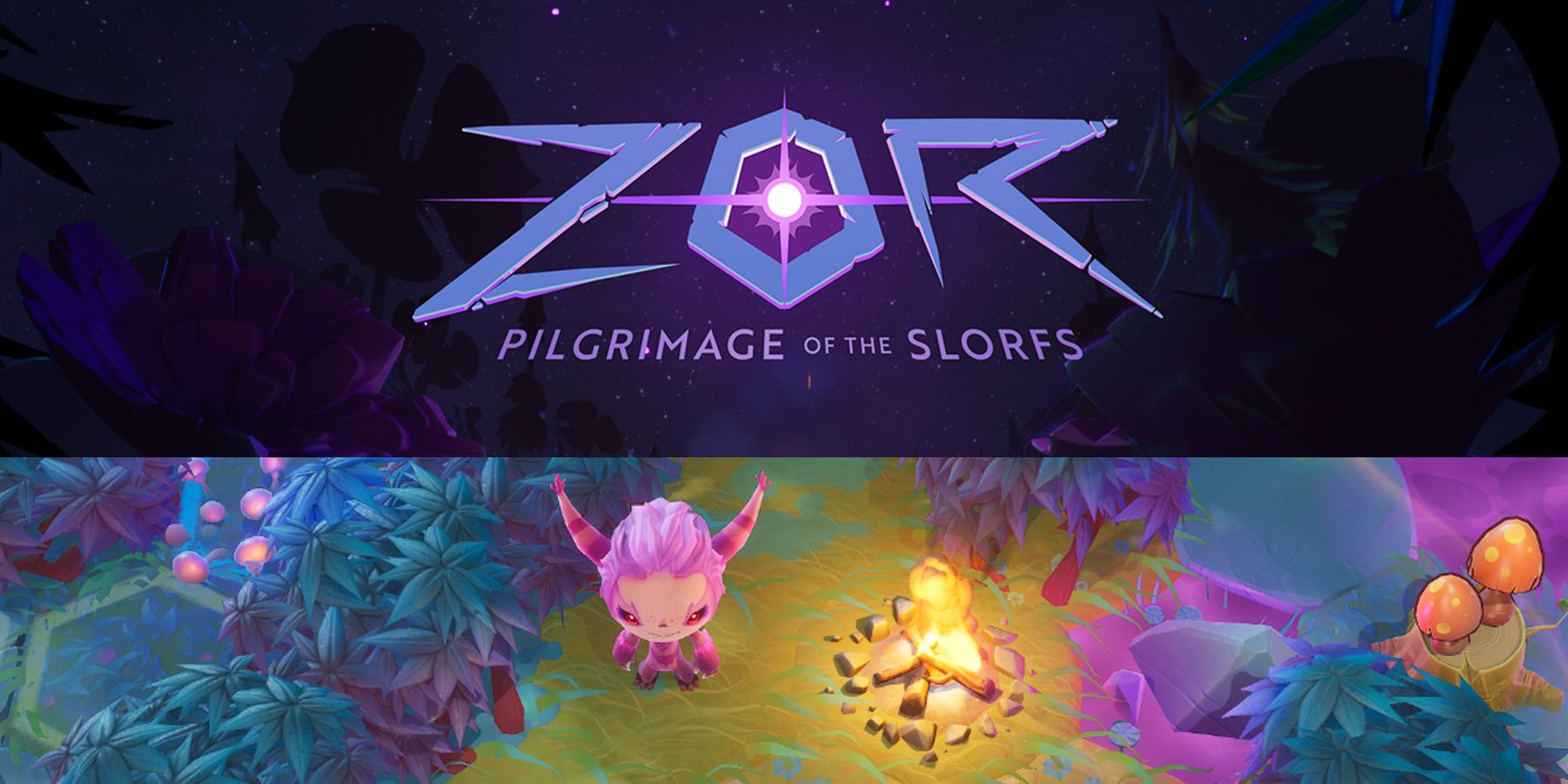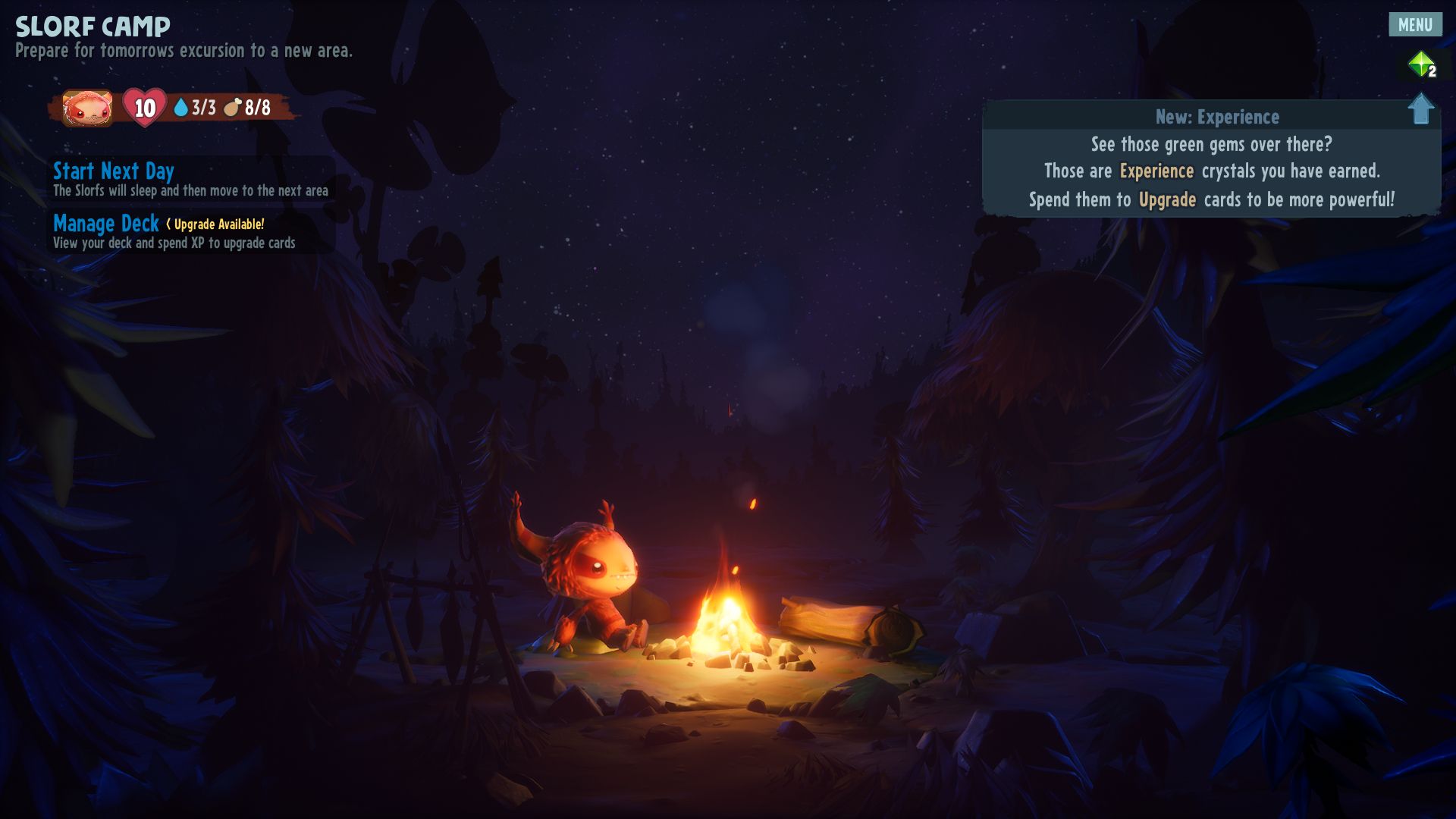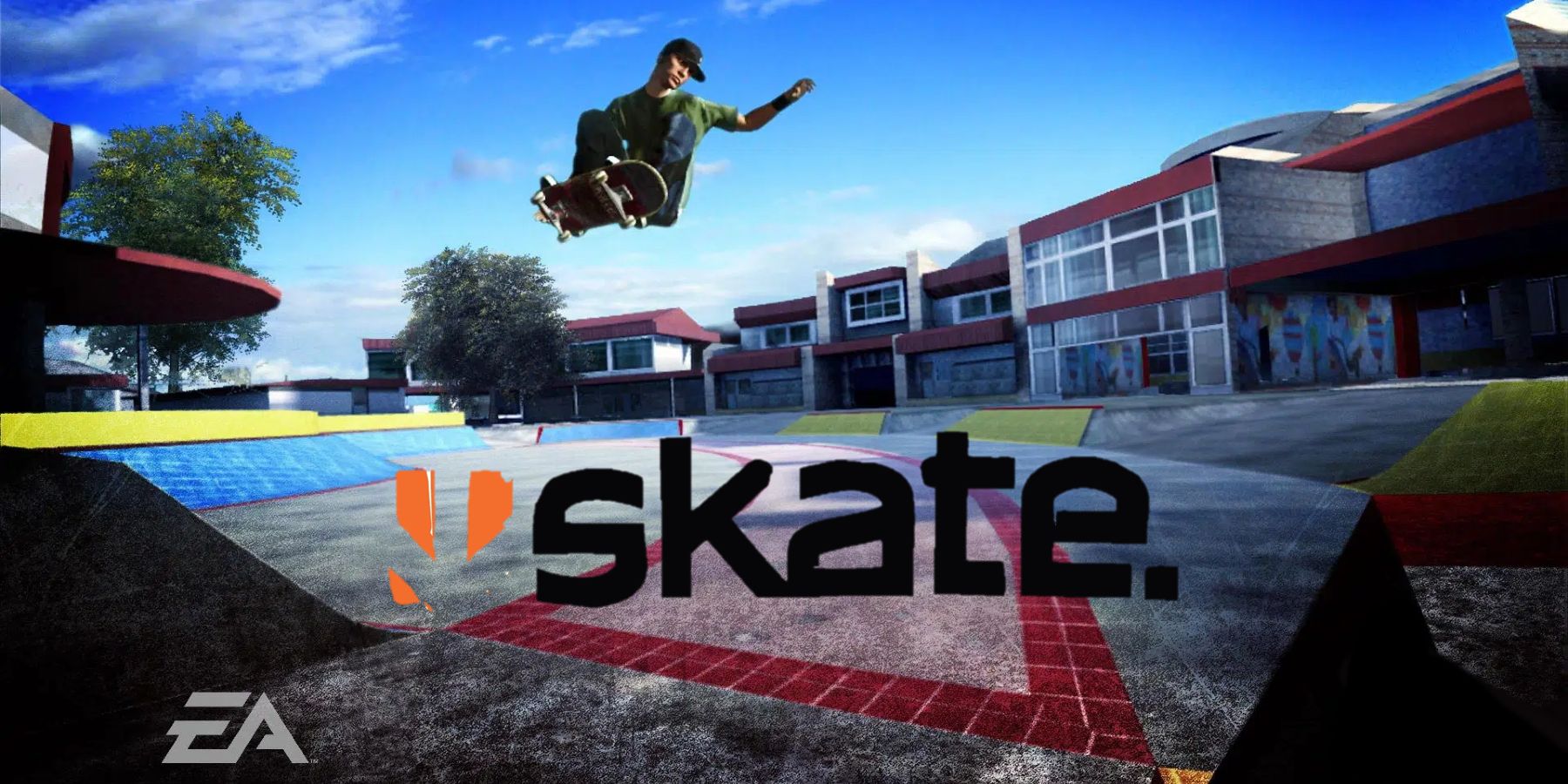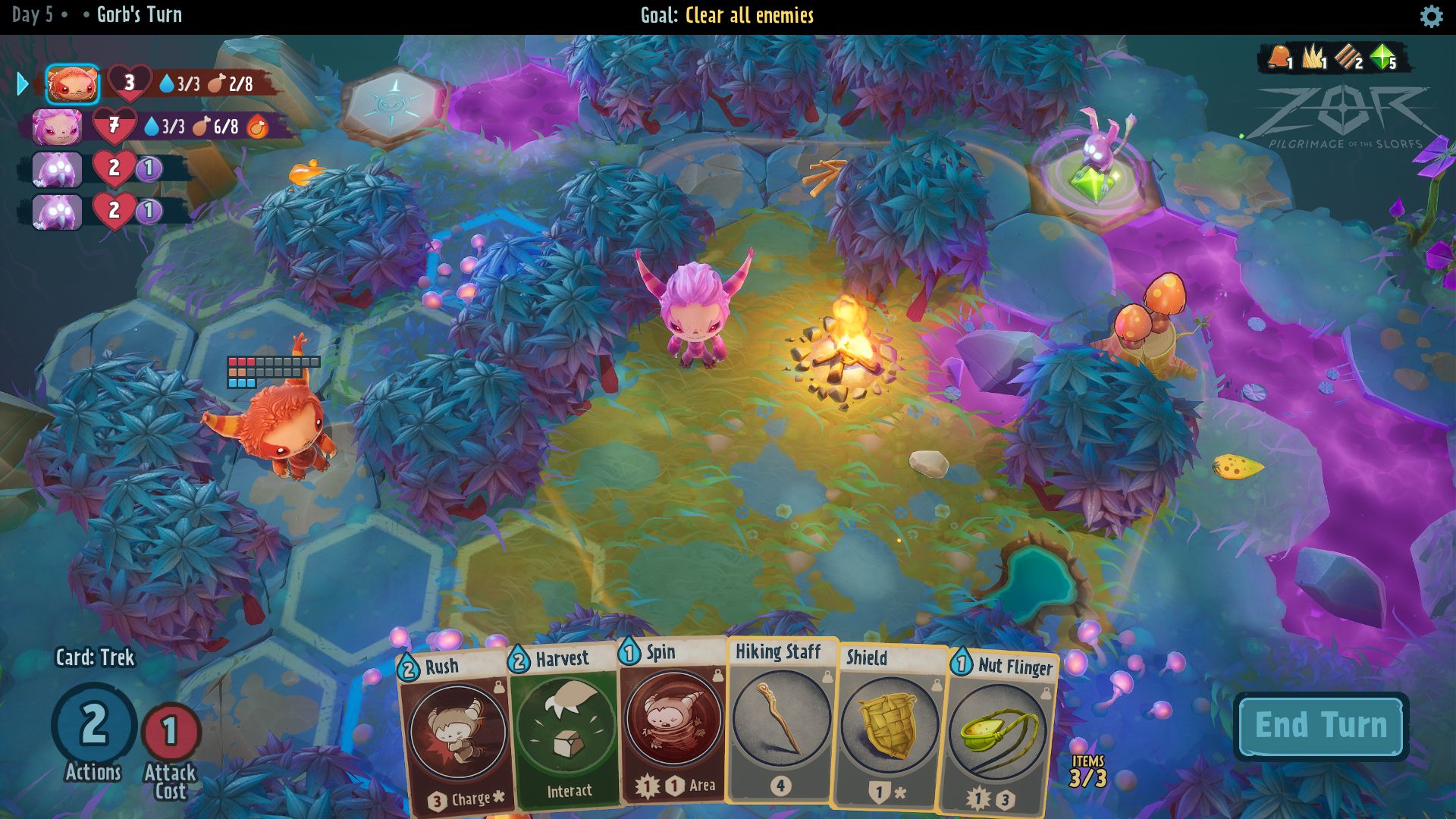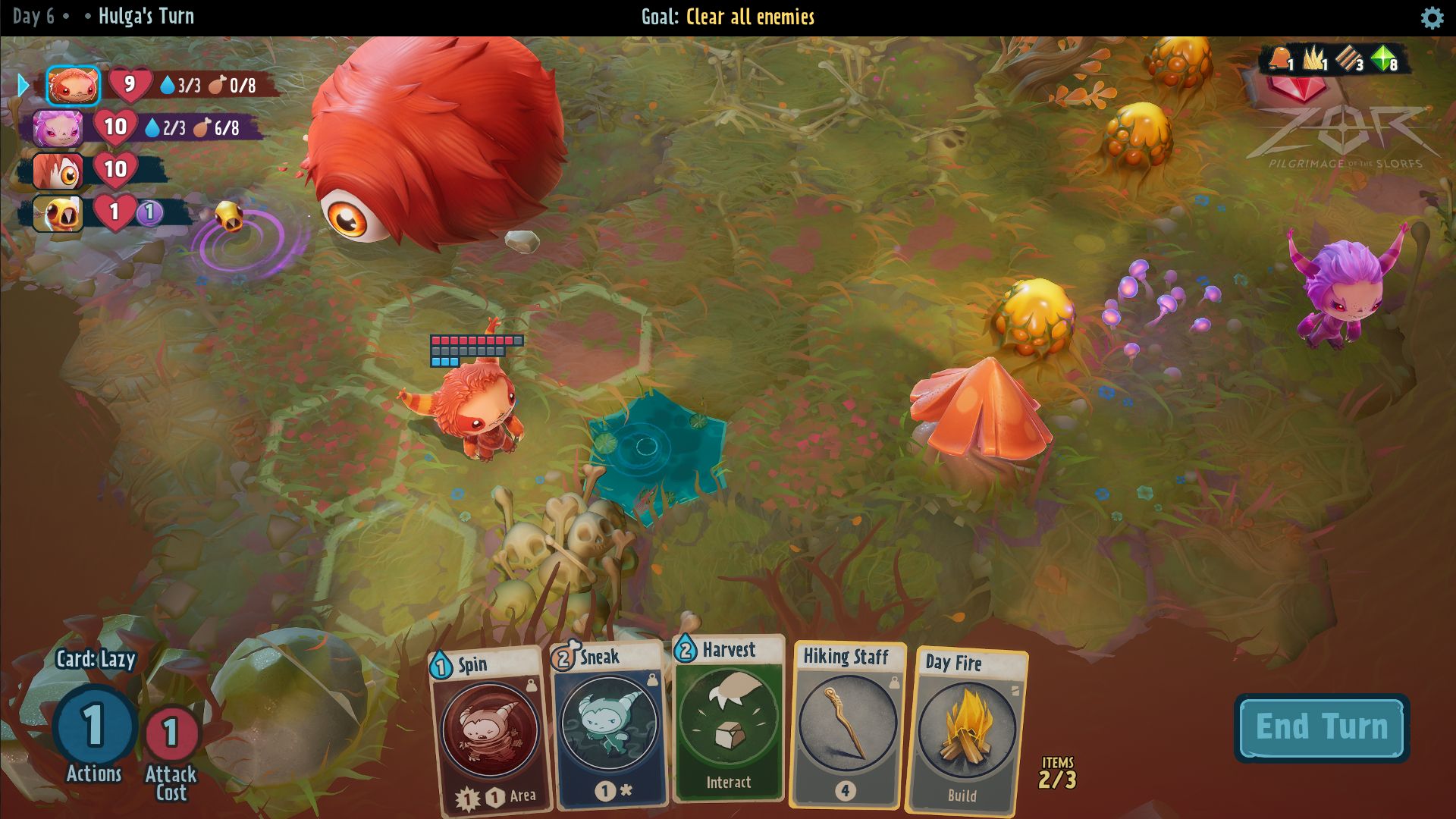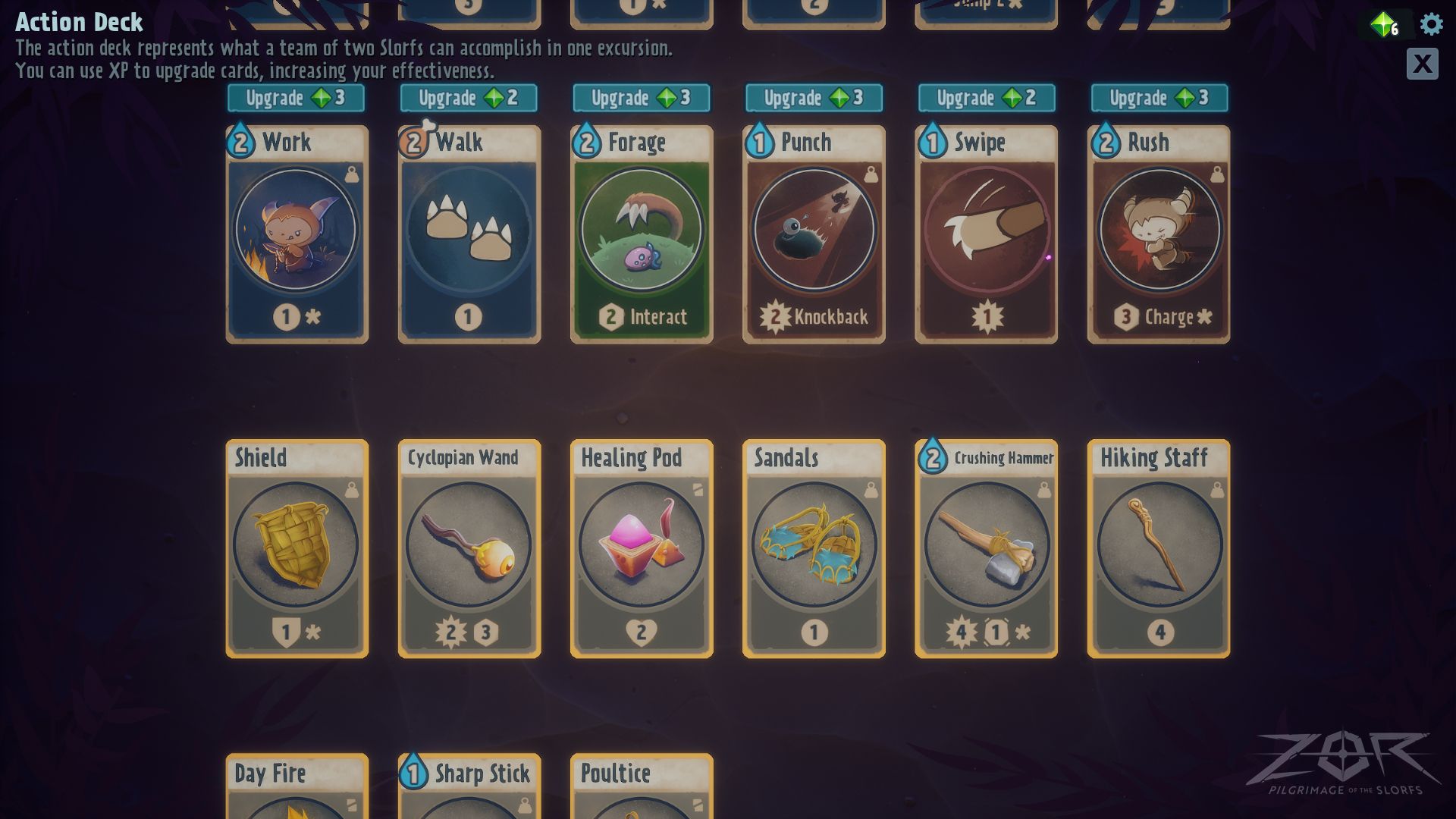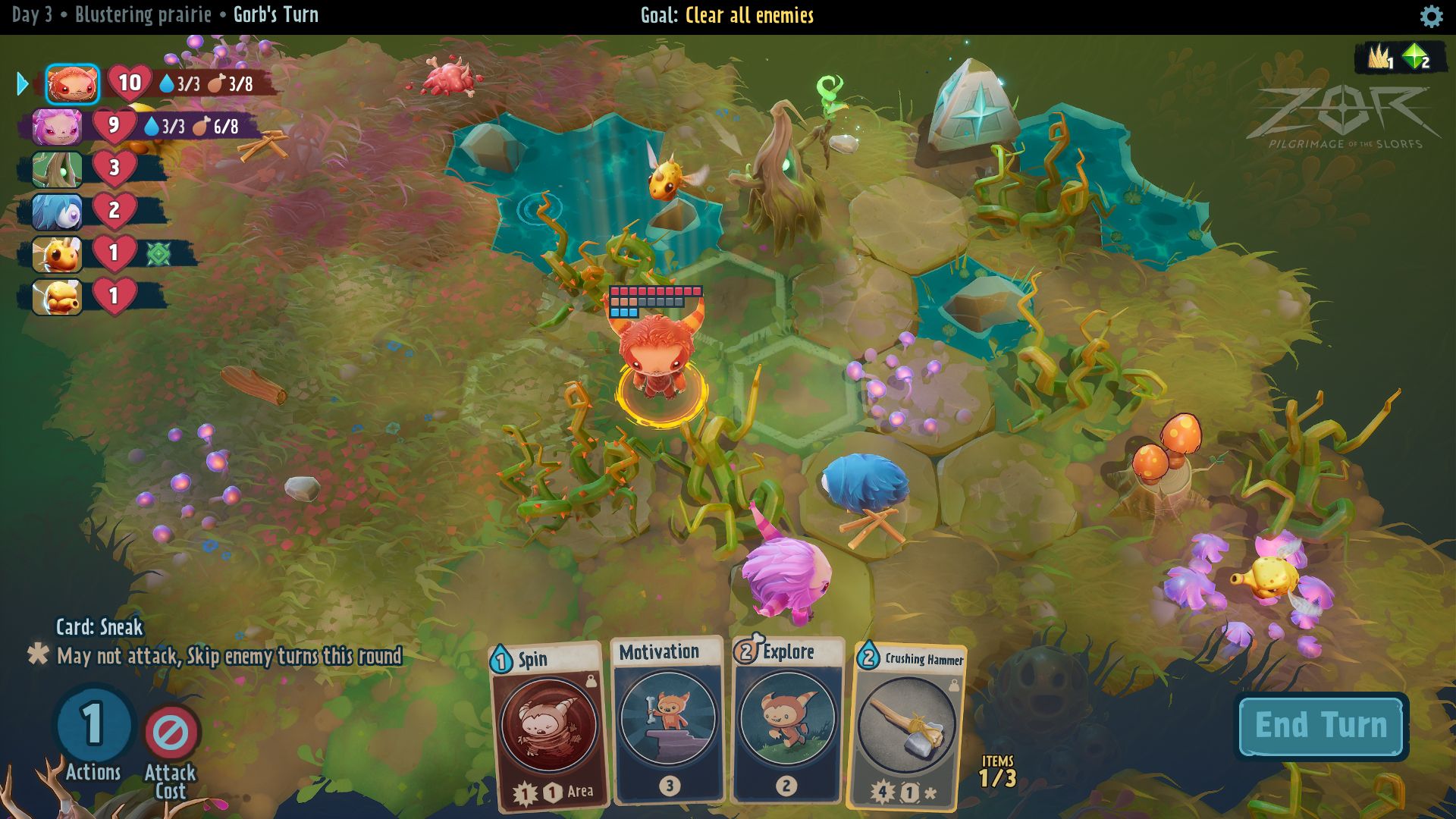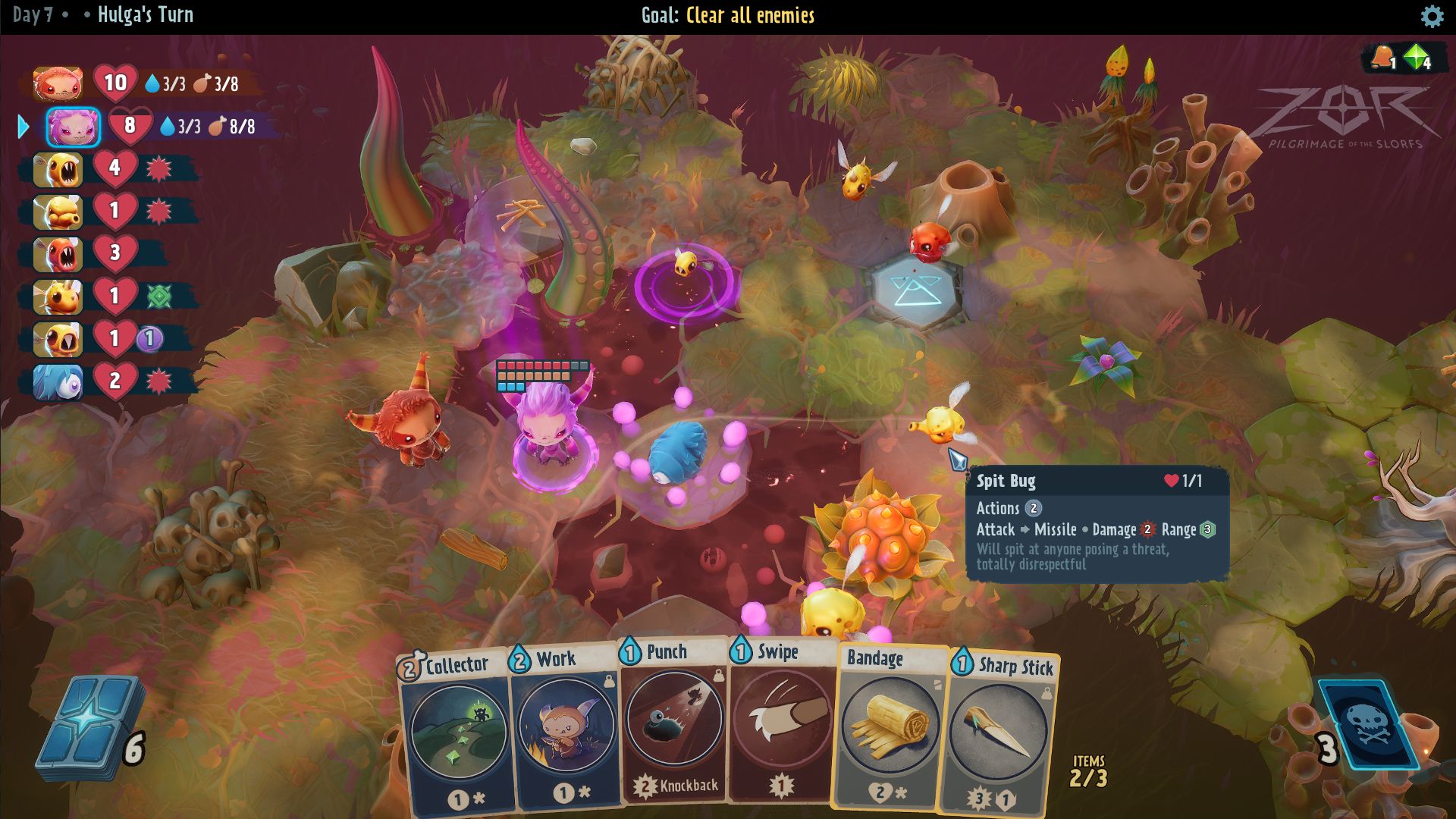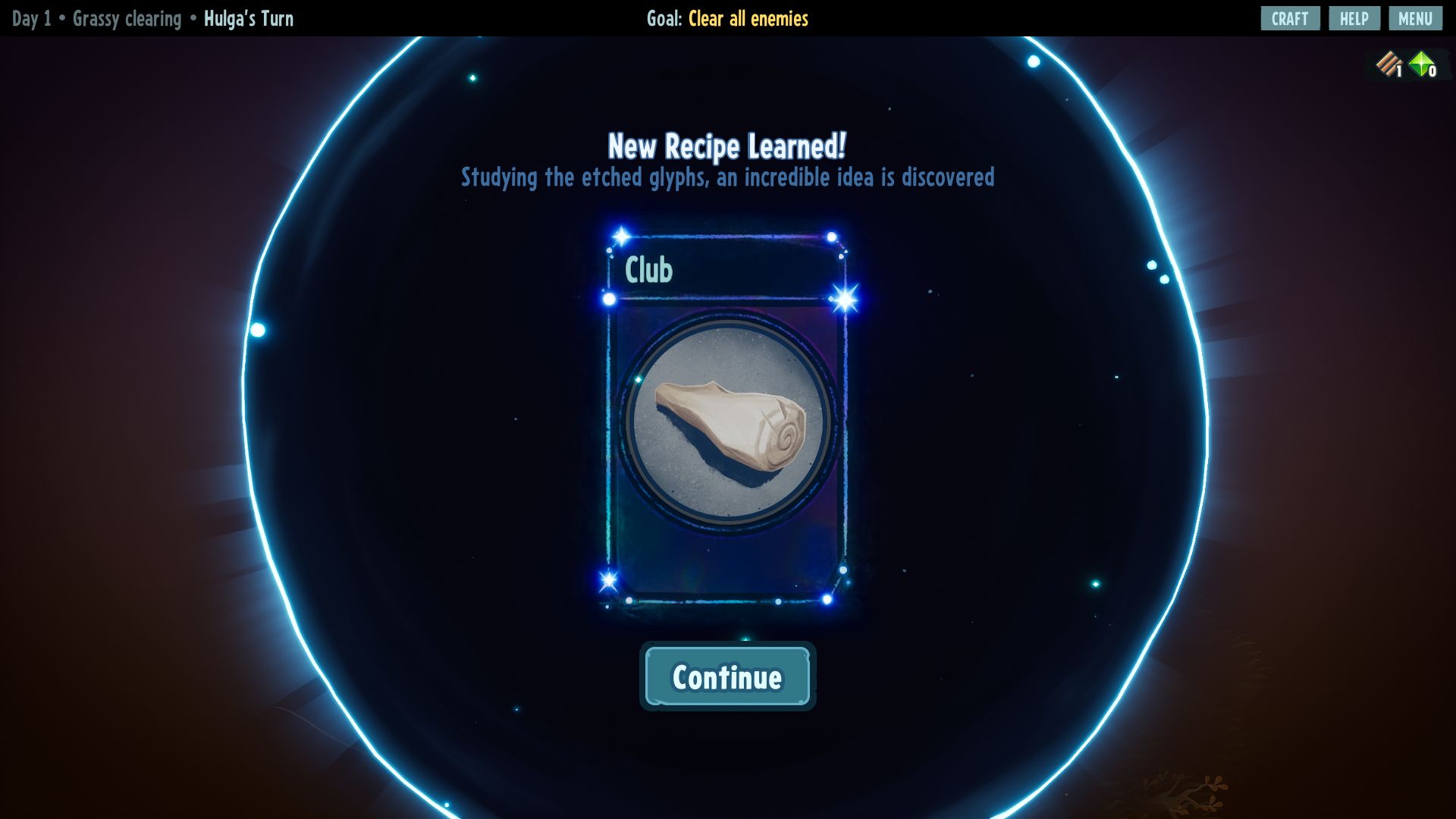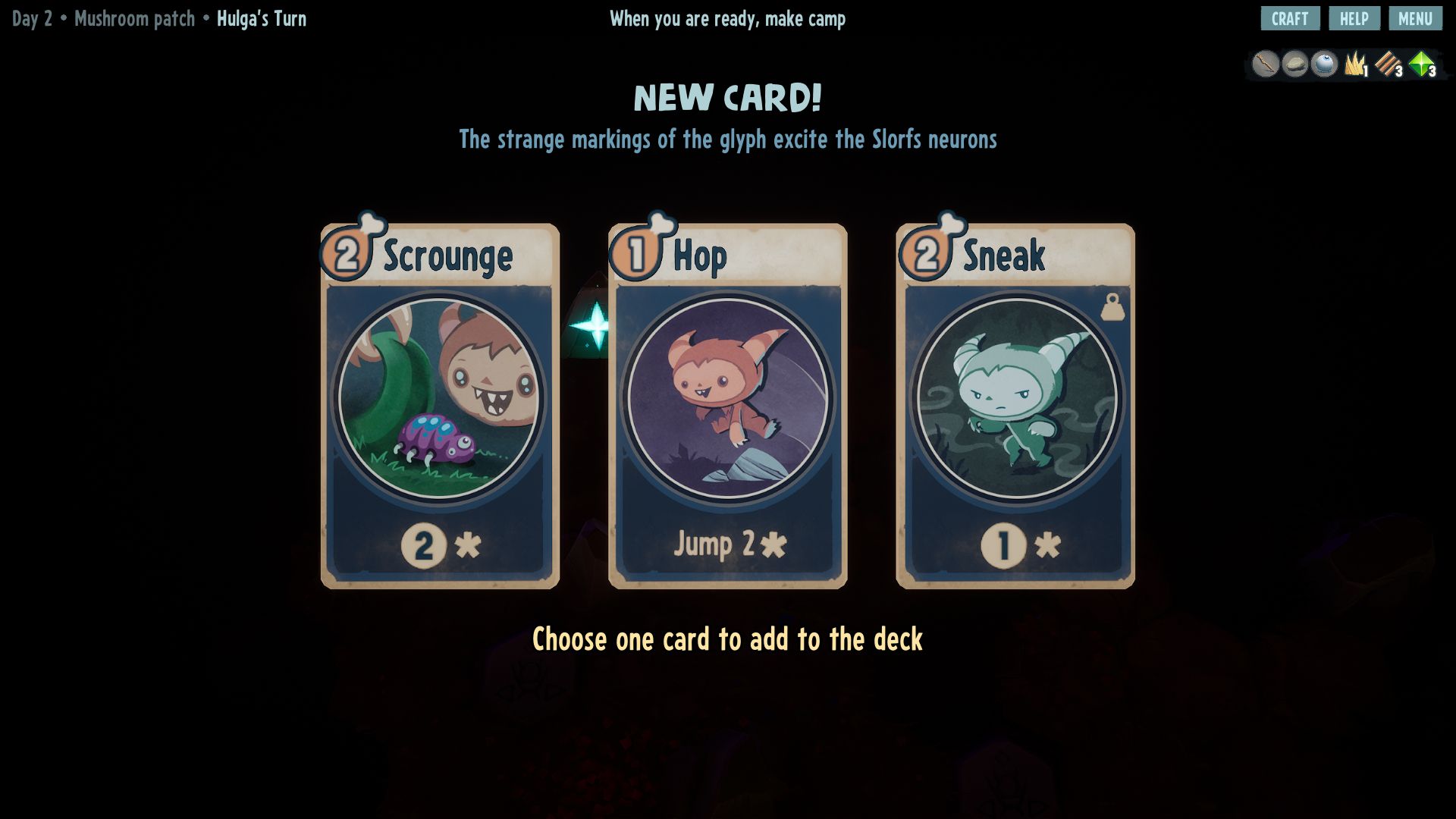While major AAA game studios are supplying many of the titles that everyone is talking about, like FromSoftware's Elden Ring or upcoming releases like Final Fantasy 16, indie games are finding a seat at the table. Some of the most widely-discussed indies online these last few weeks have been Stray and Cult of the Lamb. ZOR: Pilgrimage of the Slorfs doesn't have a major indie publisher like Annapurna Interactive or Devolver Digital, but Righteous Hammer Games has experience at studios like EA and Respawn Entertainment to draw upon.
Game Rant spoke to studio founder Clint Jorgenson and artist Gavin Yastremski about making the transition to indie development, and all the intricacies behind making a genre mash-up as ambitious as ZOR with a small team. Interview has been edited for clarity and brevity.
Q: How did you both wind up in the games industry?
Jorgenson: We probably have different stories. I'm pretty old-school, my first gig was on this game called Def Jam: Fight for NY over 20 years ago. Then I was at EA for 13 years, I worked on a couple of SSX games and the whole Skate series. I met Gavin on a project called Plants vs. Zombies: Garden Warfare. That's when I left to start Righteous Hammer, and Gavin joined a few years later. How Gavin got into games I'm not sure though.
Yastremski: Yeah, my first game job was at EA about 10 or 11 years ago, I was there for nine years. I worked with Clint on Plants vs. Zombies: Garden Warfare, there were three of them and I worked on all three. I ended up moving to Respawn for just short of a year to work on Apex Legends. Then I shifted over, I got bit by the indie bug I guess. I was always intrigued and wanted to do something with a smaller team, and Clint had an awesome opportunity for me to join in on.
Q: Landing at EA as your first major job in the industry is impressive, were you looking to get into games? Clint I understand you previously worked on movies, too.
Jorgenson: When I was a kid in 1984 or whatever, I got my first computer. I didn't think of gaming as an industry, but I was super into computer graphics and programming - the 80s version of that. Then in the 90s I was always into art, but it was never at the top of my mind, I worked in a lumberyard. At the end of the 90s I realized I could possibly take it seriously because a lot of the web dotcom stuff was starting, and it seemed like something you could make a career of.
So, I went to school, and I was kind of like an ActionScript/Flash guy. For movies I was doing... I think they call it "fantasy UI" now, basically the fake computer screens in TV and movies. Scooby-Doo was one of the first projects, then some other TV shows I can't even remember. It was kind of short-lived.
[Clint's connection drops]
Yastremski: I'm sure he'll make his way back.
Q: In the meantime, how about you Gavin? Were you always interested in games?
Yastremski: Yeah, I guess I was kind of blessed in high school. We had a new course come up that got into teaching 3D software like Maya and a bit of Unity, which I think was pretty rare at the time. That was a way for me to dip my toes into the world of video game art, and it blew my mind. I knew this is what I had to do coming out of high school.
I ended up moving to Vancouver where I could go to the art institute here, they'd teach these things like a bit of Unreal Engine and stuff. Out of school I ended up working in film and television for about six or seven months while I was trying to get my foot in the door.
Like you mentioned, EA seems like a pretty big place for a first games industry job. I was super lucky that I developed a good relationship with one of the teachers I was working with, and he had been at EA - I think he'd worked with Clint before on SSX. He ended up bringing me onto the PvZ team, which was a golden opportunity. Right place, right time.
Q: Were you always into art?
Yastremski: While you're feeling things out, you sort of dabble around and see what resonates, but I always resonated with the art; especially environment art. I don't know what specifically drew me there, but - and it's kind of cliche - I guess playing games and getting lost in the worlds made such an impression on me that I knew it's something I wanted to be in.
Q: Welcome back Clint, you were talking about fantasy UI if there was more you wanted to add.
Jorgenson: I think all I said before I crashed was I never thought of it as anything but a stepping stone. It was always games I was after, for sure.
Q: So how did your experience at EA lead into indies?
Jorgenson: Well, there was definitely a confluence of things, like being burnt out. I was lucky because my career worked with a lot of great games, and when you're working on something great the crunch and intensity isn't as bad. You know you're doing something worthwhile. So I was burnt out, but I was still pretty happy there, I was never complaining.
I had a friend who also worked on Skate, I believe he left around the time of Skate 3 and started his own company in the heyday of early mobile stuff. He started making mobile games, and me and a friend at the time said, "We could totally do this." At AAA organizations, being a generalist isn't really valuable - you're always specialized. I think that was the main appeal, because from '84 onward I've been a generalist. I like programming, art, and design, everything. It was an opportunity for me to explore all these other avenues.
That was probably the main inspiration. The person was Kevin Ng, Wonderful Lasers is his company. He was definitely an inspiration because he's done quite a few successful mobile games, broke through and made us realize it's totally possible.
Q: When you split off to start Solitairica, was that an idea you had prior? Or did you workshop stuff after EA?
Jorgenson: We jammed on ideas before leaving EA, but never did any work. A bunch of them didn't happen, but the funny thing about Solitairica was the first thing we did is decide what engine to use. We went with Unreal instead of Unity because we were more familiar with that style of programming and architecture. The next thing we decided is to make a quick project to get our feet wet: "Let's just make Solitaire."
I was a huge fan of Puzzle Quest and Fairway Solitaire in the heyday of the iPad. This idea clicked of why isn't there a version of Solitaire with mana or Puzzle Quest abilities. That was it, this one mechanical mash-up idea we started jamming on, and pretty soon it was the game we decided to make. The creative of it fell out of the mechanics of the concept, like Empress Stuck. I asked, "What is the enemy of Solitaire?" It's being stuck, so let's have the power of being stuck represented by goo. Stuff like that.
It was really fun because we were so excited to be doing our own project for the first time, we decided to go wild with it. But yeah, it was kind of an accident, not everything was pre-planned.
Q: How many people were working on that?
Jorgenson: Solitairica was three. Righteous Hammer was two of us, a friend of mine Joe Van Zeipel founded the company with me, but he later left to do something else. The third was Rob Blake, who we were insanely blessed to work with. He was the audio director on Mass Effect and Garden Warfare - that's where I met him. He kind of took pity on us, we needed audio and didn't know what we were doing; he just wanted to do something fun on the side. We worked well together, I wanted to do something over-the-top and unrestrained.
A huge part of Solitairica's success was the audio, for sure. Then after Solitairica, Joe went his separate way, and around that time ZOR was in prototyping phases. Gavin and I started working together soon after.
Q: So around the time you left Respawn, Gavin, what was the allure of this project?
Yastremski: From the stuff I'd seen Clint doing on Plants vs. Zombies, I was always blown away by the UI stuff. It was always very flashy, animated, and over-the-top. We ended up getting hooked up through a guy working on PvZ, he mentioned that Clint was looking for some help. Clint sent me a demo, and it was very different from what I was used to working on, or anything I'd ever played.
He had some stuff in mind for the visuals, some concepts done, but for the most part there was a pretty big blank slate - more than I was used to. Which is scary, but it's kind of awesome to really contribute and establish something we come up with on our own. I was used to, working at EA, through PvZ 1, 2, and 3, the teams got bigger and more people were giving input. You kind of have to if you're making a giant, high-polished product, but the more you're doing that as an artist the more alluring it is to shift back to something where you have more say, and more ability to follow your own gut. I think that alone was one of the big alluring parts of the project.
Q: Did you have a lot of say in designing ZOR's fantasy setting?
Yastremski: Yeah, Clint has the groundwork in his head, but for the most part, when it comes to the nitty-gritty we feel things out together. He'll plant the seed of an idea if he has one to anchor on, and we'll kind of push through and feel it out organically.
Q: Clint, where did the bizarre world of ZOR originate from?
Jorgenson: Like I said, I'm an 80s kid. It's something you don't see too often, but I like that mix of dark, kind of creepy, and cute - that Jim Henson, Don Bluth sensibility. Solitairica was definitely inspired by it as well, things like Dark Crystal, Labyrinth, The NeverEnding Story. All that kind of 80s fantasy before the rules were set, where anything goes. There were laser sound effects for swordfights and wild ideas. It has been evolving over the years, like Gavin said, with all these little decisions and ideas along the way.
Q: In terms of mechanics, ZOR seems similar to Soliairica as a card-based game that blends genres. Was that a theme you wanted to explore?
Jorgenson: Definitely. I'm a huge strategy board gamer, and strategy/tactics has always been the video game genre I'm super into. There are a lot of ideas that I thought had potential as becoming more accessible and streamlined, one of which was card-driven tactical stuff. A lot of heavy board games like Twilight Struggle explore that.
There's something really cool about the way a hand of cards become this decision engine, where there's a bit of randomness but because you're managing your hand and know what's in your deck, every turn becomes an emergent puzzle. Rather than a traditional tactics game where it's always move, attack, use your best ability, there are certain combinations you get to know.
So that was one of the ideas, card-driven tactics that felt like a board game. The second pillar was I find combat-tactics games - whether there are cards or not - often have depth entirely in the combat system. The movement isn't as interesting. Then a game like Druidstone comes along which uses the environment more, and I thought the combat needs another layer so you're not just always doing the predictable thing. That's what ZOR's survival mechanics are about, you need to eat, drink, interact with the world to get crafting materials, and you're juggling that with combat.
Part of that idea was just that the card costs being the survival mechanic puts a clock on how long you can be in a level. So, it's a card-juggler combat game where you're also managing a layer of survival, making it so that every turn feels like a deep, Chess-like puzzle. It's definitely there, I'm happy where it turned out, it just took a lot of iterations thanks to all the layers and new ideas.
Q: As far as video game influences, ZOR reminds me a lot of Into the Breach. What kind of titles were you pulling from in that space?
Jorgenson: I wouldn't say there was much directly other than the vision of having a very polished, tight, boiled-down scale - similar to something like Advance Wars or Final Fantasy Tactics where there's that Chess-like feeling. For sure, Into the Breach has that in spades, where every turn is a puzzle that's deep, but that depth isn't in the complexity of the systems beneath it. The decision-making is actually intense.
The goal of ZOR is that every turn feels like that, there's no turn where everyone is just walking across the map like in Advance Wars. Every turn, every step, everything you can do is something you need to deeply think through.
Q: Gavin, how do you design a world that balances the cutesy Jim Henson style with this intense gameplay?
Yastremski: There's been a lot of back-and-forth trying to find that perfect sweet spot, because it's super easy to lean too far one way. When you think about something like Dark Crystal with its appealing, beautiful colors and shots, but it can still give you nightmares, that's always been our aim. If you just look at things, they look quite appealing - we're not super desaturated with grays and browns, we're using a full range of colors. But at the same time, when you look a bit closer, some things might look a bit gross or creepy, giving you a freaky vibe.
It's a balancing act for almost everything we put in, especially when we do the new biomes. Where exactly are the things we're going to inject that give this tense, sort of creepy vibe to it?
Q: ZOR's marketing talks about a "dizzying" amount of actions with crafting and procedural generation. How do you balance all of these elements?
Jorgenson: It's definitely not easy, but it has gotten a lot easier. There were so many iterations where certain ideas didn't work, but I'd say about a year ago the flow and the way things work really clicked. It was like, yes, this is exactly what it needs to be. Then the second leg to that is balancing all the micro-layers down to whether this is +1 or +2.
The way I've learned to approach it is you can play Whac-A-Mole forever in terms of balance. So, there's a hierarchy of what is allowed to effect the balance of something else. At the very lowest level might be the number of hexes in a level and how that ramps up, it isn't going to change because there's too many sticks or something like that. I have this stack of 12 or 13 concepts, and there's this rule that the thing underneath is a baseline, and the more granular things get tuned based on that. It forces you to commit in layers and tune more and more granular, not go back and forth.
One of the things about ZOR is it's simple in that the amount of stuff is lower than, say, RPGs being complex and deep because they have 1,000 items and 75 spells. This game is more about the infinite ways its smaller amount of content combines. You never get bored because there's always different layers emerging.
Q: Moving into the Steam Next Fest demo you released, how has that feedback helped focus your direction?
Jorgenson: Oh, it was super huge for us because there was a long time period where things weren't working as well, so we got lots of feedback. I've been working in games a long time, and there's this deep feeling where you just know whether it's working or not. Like when I worked on Skate, or we worked on Plants vs. Zombies, in your heart you just felt when the game was good, when things were going right. That's the feeling I'm always chasing on these projects, and here it took a bit.
Next Fest was the moment where that was validated, because we could tell people were enjoying it, it was clicking. People were seeing the potential in it. That being said, there were some major points that were consistently brought up that narrowed and guided our direction since then. Things like having deck slots instead of just a free-for-all, because one of the behaviors we were seeing at Next Fest is people hoarding. We should have expected that, because it's natural in these kinds of games. We've all played Witcher where you have 75 potions and never drink any of them. So people were hoarding, but the way that the card game worked you would end up with a whole hand of nuts, fish, and leaves. You can't even move.
It makes sense in a way, because if you're hoarding you're just carrying all this stuff and can't do much. But we didn't want that to be possible because it's pretty lame. That was probably the biggest thing that guided us, but then of course there's a huge amount of quality-of-life and user experience things that we've improved since then. So yeah, it was huge; a really important step for us.
Q: Gavin, how would you characterize some of the reactions you've seen?
Yastremski: Yeah, I mean as far as Steam Next Fest and beyond, like Clint was saying leading up to it we were getting feedback, sending out demos, and generally the reaction was pretty good. But there always felt like something missing. By the time we got things polished up for Next Fest and into the wider public, it was a really awesome feeling. It's such a unique game that to watch people enjoy it, I think it gave a lot of juice to us to continue through and push things out to Early Access.
As far as how it changed the way we're approaching things... Watching people play we're always on the lookout for comments or feelings. Like are visuals getting too repetitive? Because you interact with ZOR similar to a board game, a bigger learning thing on the world and art side is making sure when the player looks at the board that they aren't overwhelmed with information, and everything is clear. If something is just acting as an obstacle or perimeter, visual dressing, that it's not pulling away from the overall experience.
There's already a lot of stuff when you look at the board that you have to analyze and think out. So, I think a big part of it was really tuning and nailing down what that language is to keep the important things visually in-focus, and push other stuff back.
Q: Were there any particular examples?
Yastremski: I think one thing that went through quite a bit of iteration was the way the perimeter art was handled. It would be easy enough to approach it where the hexes you play on are floating in space with a colored background or something - that would be the clearest way to show where the interactive tiles are. But we wanted it to feel like you were actually progressing through this world, that the world around you is large and intimidating; you're just in a small clearing of it.
Part of that was figuring out a way to procedurally dress the world, but also push it back to where it's only there when you stop and look at it. It's not something that's going to draw your eye too much. That went through quite a bit of iteration.
Q: Earlier we were talking about the Yogscast's Tiny Teams. How did you get invited, and what are you doing to prepare?
Jorgenson: Yes, so I just applied - there was an application form. Tiny Teams is this event where streamers and content creators play indie games created by small teams and solo developers. We do work with different contractors, but at our core it's just the two of us sitting in our house, so we thought it would be perfect. Super excited.
Because we're launching in Early Access soon it has been an extra deadline, but the game is in a really good place; it's polished, very few bugs. It's more that between the demo and what we'll release for Early Access, there's a lot of new stuff, a lot of those fixes that we talked about. But it's not the full Early Access amount of content either. We've just been buttoning that up, putting the package together. It's good, I'm excited to see the reactions to the new build and how it compares to Next Fest.
Q: Definitely. Coming off of that, what are your expectations for the Early Access release?
Jorgenson: Honestly, it's just going to be one step pushing forward. We had this whole roadmap of things we wanted to do. I think it'll be a lot more polished-feeling than a lot of Early Access projects.
There are all kinds of different Early Access approaches, ours is a polished, replayable, tight game with a lot of content that we plan to add a lot more to. We don't want to call it "final" yet, there will be frequent updates with new regions, new content until we're satisfied. It won't be Early Access that's years and years of noodling on things, we had a pretty specific plan and want to be transparent. Then we'll release it and probably support the game after if people are digging it.
So yeah, it's this big moment and this huge thing, but there probably won't be any time to celebrate or pat ourselves on the back. Still have a lot more work to do. I just hope it resonates, because I know it's a really novel concept - it has that thing where it has to click. We saw the click at Next Fest, where people played it and didn't know what to think about it, then a few levels in were like, "Yeah, the way this survival combines..." It's a feeling you have to feel by playing it, and it's very fresh, unique. But that's one of our marketing struggles, trying to sell that point without people having it in-hand. Really hoping for that word-of-mouth, get that reputation built up as something you need to try.
Other than that, fingers crossed. We hope people appreciate it, and we can keep growing this idea.
Q: That segues into something else I wanted to discuss going from AAA to indie games, both marketing and fundraising. I understand you got creative grants from British Colombia, right?
Jorgenson: Yeah, that was very early, before Gavin even. I was working on this prototype and I think I saw a colleague got something similar. There are a bunch of different programs, so I just threw my lot in and applied for it. I did get it, but it was interesting because the rule of the grant was you had to spend the money on subsidizing artist, engineers, animators; you were hiring people. There was an audit, you couldn't even spend it on equipment and stuff.
The game was early at that point, we committed to 3D because of that grant. It was enough to do a first-pass prototype on what the art could look like, with some audio. So I spent some of that, and thank god Gavin joined because the 3D stuff is such a step-up from the 2D of Solitairica. Not just the art, but the way it all comes together, the animations. That funding started this kind of snowball effect where the game became real ambitious. It was kind of like Solitairica in scale at first. This freaked me out at times, but I'm really happy now because I can't believe what we've done with such a shoestring budget.
We also got a grant from Epic, the MegaGrants program. That was awesome. All this stuff keeps things you need that Gavin and I can't necessarily do like audio, QA, animation was a big one - though we've been doing more of that ourselves lately.
So yeah, we've had some good fortune along the way, but the other side of it is we've been working on this project about four years when it was supposed to just be two years. That funding is the only reason the game can exist right now at all, since it's a huge, ambitious bet, for sure.
Q: Just to clarify the details here, was Gavin approached because of that hiring budget?
Jorgenson: No, Gavin was after that. I think the first half-year was working with that funding, it was largely concept art and some 3D art, animation. I would say that led up to the milestone of the vertical slice, where you just had the engine, the cards, the units moving around the map in an early art style. That was meant to be the stepping stone to the next phase, and that's around when Gavin joined. You can really see the difference, because if you see the art before Gavin joined it can't hold a candle to what things look like now.
After Gavin joined we announced the game about a year later. We definitely announced it too early, just because it's so hard to judge what that exact timeline will look like years into the future.
Q: Since you both have experience at EA, is it different seeing things like its new Skate from the outside?
Jorgenson: It's so, like... I never thought there would be another Skate game, just because of the nature of how EA does business. They want huge hits on an Elden Ring level, and Skate was always this niche passion project. It definitely did well, I think - I'm not a business person - but they shut it down for a long period. I know a lot of people still on that team and they're great, I'm so stoked that they're bringing this back to life. Everything about it just seems on-point.
It does feel really weird not being on the project because I have such a history with that team. But I'd say it's positive, it's cool. I'm definitely keeping tabs on what my old colleagues are up to, there's no bad memories about it.
Gavin, I don't know if you've got a different take on it?
Yastremski: No, no. I think it's kind of a similar perspective where I'm super stoked on seeing what those guys are putting out. Some of the people I worked with on PvZ moved onto Skate, and for the guys who worked on Apex I'm always stoked to see what they're doing. It looks like a lot of passion was put into it. That's not to take away from what we're doing. It was an awesome world to be in, but after a time you kind of need a break from the giant teams.
Q: You're obviously deep into production here, but do you think you'll keep going with smaller projects? Or are you interested in going back to bigger stuff after ZOR?
Jorgenson: Oh man, the thought of bigger seems so insane to me. But it depends on the response to ZOR, and if it's successful enough to make it the ultimate version it deserves to be. That would be the dream. I would also like to come back to Solitairica at some point, I think it deserves another game, there's just obviously no way I could work on anything parallel.
But yeah, in terms of bigger, getting funding and a publisher, it just so far hasn't seemed to work for me. I have discussions, but I think I'm too passionate. I'm too much of a perfectionist, obsessed with quality, obsessed with things being polished and caring about the consumer, being ethical. Things like microtransactions are gross, I'm so against that stuff. Not that it makes me special, I would just love if we could keep working this way, jamming on really great stuff. Being successful enough that we're happy doing it. But you never know, things just kind of pop up. Not sure what the future will really hold.
Yastremski: Totally, I'm in agreement there. I was super fortunate that Clint brought me on to work on this project, and the dream to me is to continue doing what we're doing. Being able to explore unknown territory and be pretty free, moving around, adjusting the sights on what we're doing. That's the dream.
Q: Is there anything else you both want to add?
Jorgenson: No, this was great. I'm in my garage cranking away so often that it's nice to chat and reflect, realize there's a bigger picture. I just really hope if you're intrigued, give ZOR a chance when it comes out soon on Early Access.
[END]
ZOR: Pilgrimage of the Slorfs is in development for PC, with a Steam Early Access launch scheduled for August 30.

